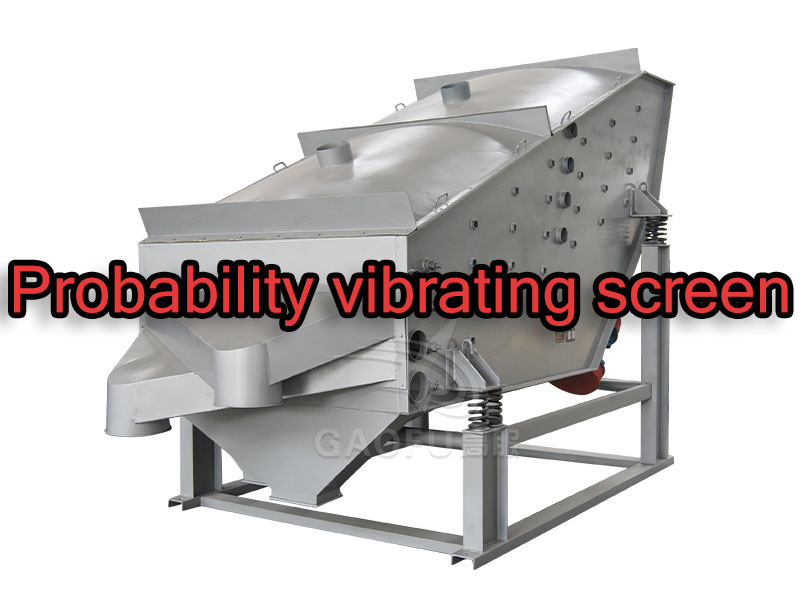In the fast-paced world of industrial processing, the demand for efficiency, precision, and increased productivity is ever-growing. One piece of equipment that has gained significant attention in meeting these demands is the GLS Probability Vibrating Screen. Known for its advanced design and superior performance, the GLS Probability Vibrating Screen offers a solution for precise material separation while enhancing overall production efficiency. Whether used in mining, chemicals, food processing, or other industries, this machine has been engineered to optimize operations, reduce downtime, and deliver exceptional results.

Precise Material Separation for Improved Quality
The GLS Probability Vibrating Screen stands out for its ability to provide highly accurate material separation. The technology behind this screen is based on the principles of probability, which means that it uses the characteristics of the material’s particle size distribution, combined with vibration and screen motion, to achieve more efficient separation.
Unlike conventional vibrating screens, which rely primarily on mechanical force, the GLS screen leverages the principle of probability to achieve precise and consistent results. The machine's unique design allows materials to be screened more effectively, ensuring that only particles of the desired size pass through the screen, while others are efficiently removed. This results in a higher level of purity and better material quality, which is especially critical in industries where precision is key.
The ability to separate materials with such accuracy enhances the overall production process. By ensuring that the materials are processed correctly and to the highest standards, businesses can ensure a better final product and reduce the chances of contamination or waste, leading to significant cost savings.
Increased Production Capacity and Efficiency
One of the most significant benefits of the GLS Probability Vibrating Screen is its impact on production capacity. Thanks to its advanced technology and efficient material separation process, the GLS screen can handle higher volumes of material in a shorter amount of time. This ability to process more material without compromising on separation quality results in a notable increase in production efficiency.
The screen's high throughput capacity means that industries can significantly increase their operational output while minimizing bottlenecks in the production process. This increase in productivity not only allows businesses to meet higher demands but also enables them to optimize their resources, reduce energy consumption, and lower operational costs.
Moreover, the GLS Probability Vibrating Screen operates with less vibration and noise compared to traditional vibrating screens. This means that it can run more smoothly, which further enhances its operational efficiency. The result is a quieter, more energy-efficient machine that delivers higher throughput without the need for constant maintenance or adjustments.
Minimal Maintenance and Longer Operational Life
With its advanced design, the GLS Probability Vibrating Screen is engineered for durability and reliability, offering reduced maintenance needs. The machine's unique vibrating motion ensures that there is less wear on the components, which directly translates into longer service life and fewer instances of breakdowns or repairs.
This reduction in maintenance requirements also contributes to more consistent and continuous operation. Industries can rely on the GLS screen to maintain peak performance for extended periods, reducing the need for costly downtime and frequent repairs. In the long run, this translates to cost savings and a more streamlined production process, which ultimately boosts overall productivity.
Versatile Applications Across Industries
The GLS Probability Vibrating Screen is incredibly versatile and can be applied to a wide range of industries, from mining and chemicals to food processing and pharmaceuticals. Its ability to handle various materials—whether they are dry, wet, or sticky—makes it a valuable asset for companies with diverse processing needs.
For example, in the mining industry, the GLS screen is used to separate ore and fine materials efficiently, helping to maximize the extraction of valuable minerals. In the food processing industry, it ensures that products are sifted to the exact size specifications, helping to improve the consistency and quality of the final product. Similarly, in the chemical industry, it can be used to separate fine powders and particles, ensuring that only the correct size material is processed.
